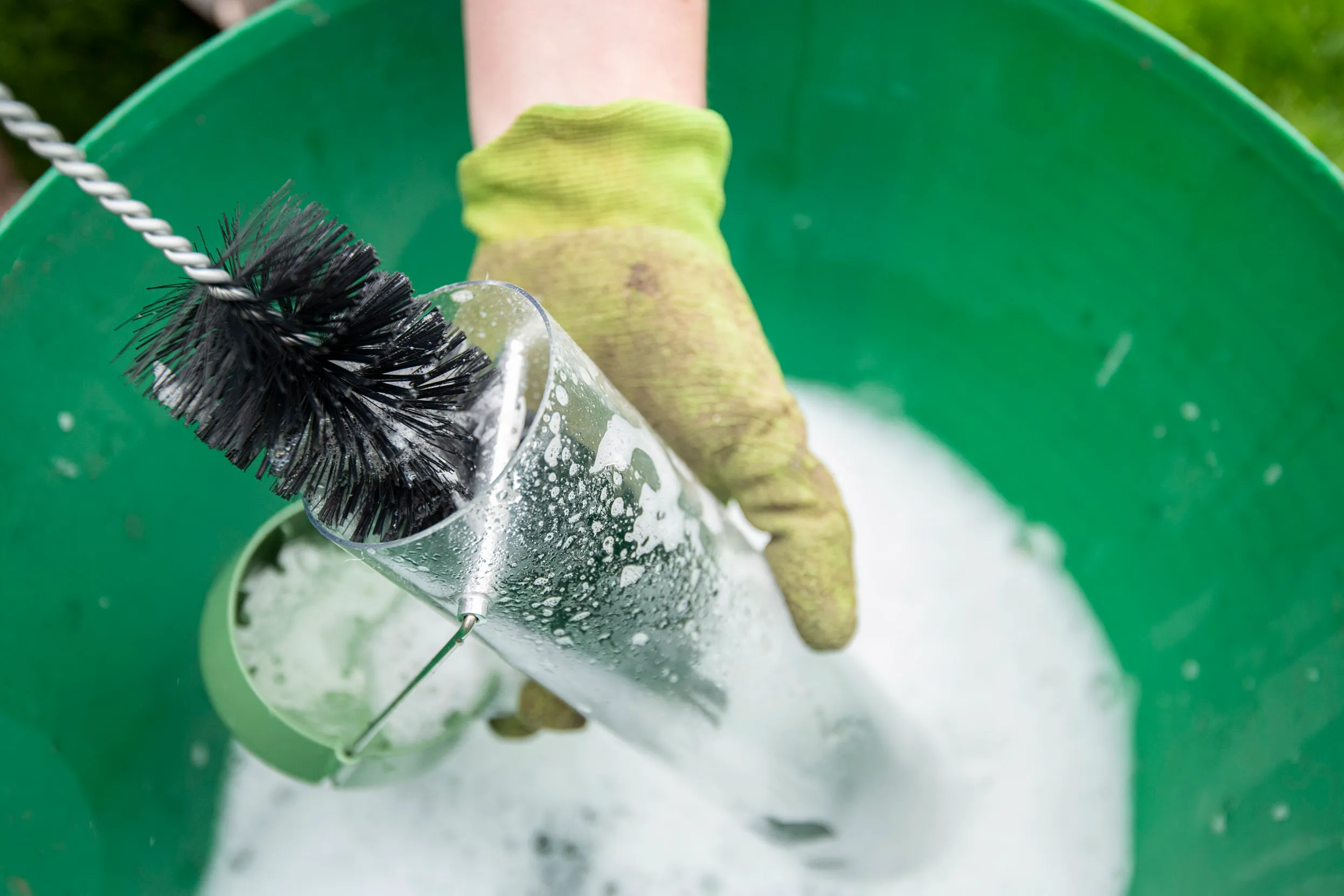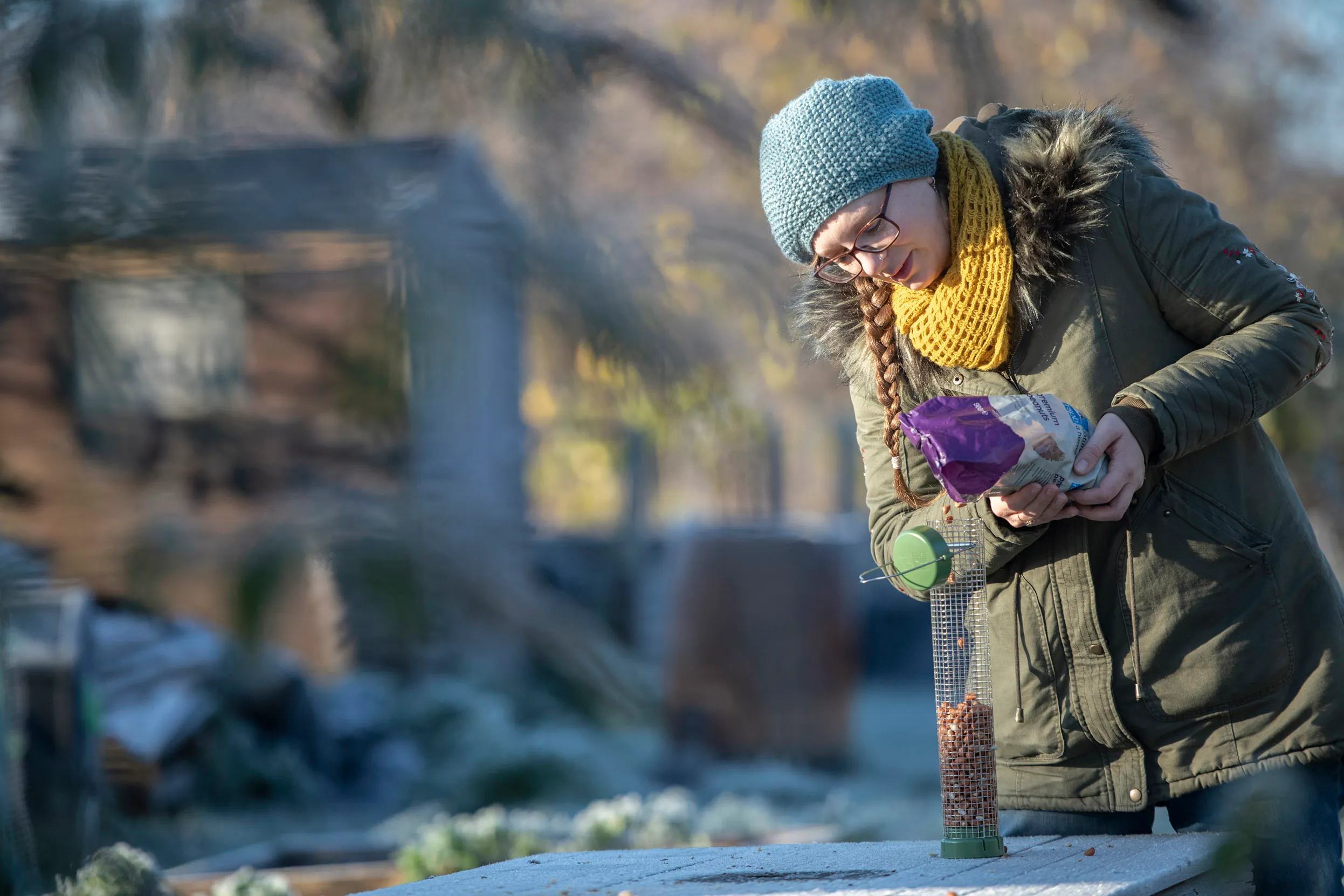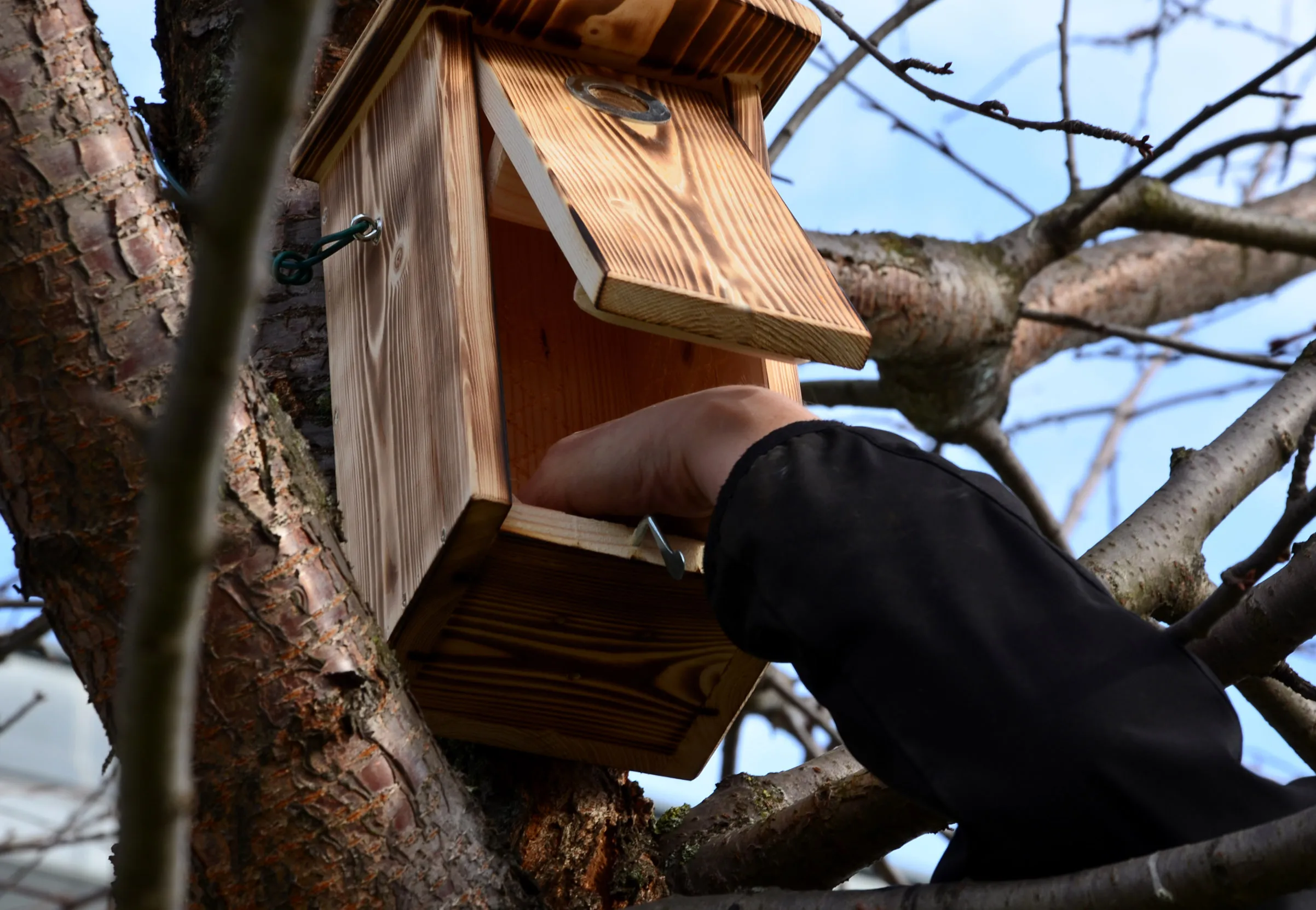
Keep your bird feeders clean and your birds healthy with a long-handle feeder cleaning brush.
Advice from the wildlife team on looking after your local feathered friends. From the best bird feeders to helping prevent injuries and attacks.

Feeders come in a variety of shapes and sizes. Nut feeders made of rigid steel mesh are the only safe method of offering nuts to wild birds. Seed feeders are designed for sunflower seeds and seed mixes labelled feeder seed. Make sure all feeders drain easily and do not allow build-up of old food. For more information and guidance on finding the right feeder for your needs, see our Bird Feeder Buying Guide.

You can put your bird feeder in all sorts of places, but aim for somewhere:
Wherever you place your feeder, make sure you can see it when you’re indoors so you can get the most pleasure from it!
Bear in mind, it can take a little bit of time for the birds to get used to a new feeder, so don’t be disappointed if not many birds visit at first.
Many birds will happily eat a variety of foods, but here are some of our top tips for feeding the birds:

You can find a wide range of good quality bird food in our shop as well as a range of special offers. RSPB bird food mixes, such as our table and feeder mixes, have been designed to be fed in different ways to suit birds’ feeding habits.
Bird feeder hygiene is very important. Brush off debris every time you put out fresh food and scrub feeders with mild disinfectant solution weekly. Move the feeders from time to time to stop droppings building up underneath. Water containers should be rinsed out daily, especially during the warmer months, and allowed to dry out before fresh water is added.
If you see a sick bird on your feeders, stop feeding altogether, thoroughly clean your feeders and store away from the garden (e.g. in the garage or shed). Only resume feeding after 2-4 weeks, but stop and repeat the process if you see any more sick birds.
Some bird diseases can infect people. The risk is small, but precautions are worth taking. Wear gloves and thoroughly wash your hands after cleaning bird baths and feeders. Clean feeders outside with separate utensils.

Keep your bird feeders clean and your birds healthy with a long-handle feeder cleaning brush.
It’s good to provide a regular supply of clean water for birds. It’s particularly important in the winter and in dry weather. Shallow containers, like dustbin lids or plant saucers, work well, but make sure you clean them regularly.
We stock several types of bird bath that will provide somewhere for your garden birds to drink and bathe. Buy a wild bird bath from our online shop and help us make a difference today.
You could look into investing in a squirrel buster feeder. The weight of a squirrel (or large bird) causes the feeder ports to shut, so they can’t access the food.
You could also try plastic bottles, fixed so they revolve, slipped along the post, or one of the available squirrel deterrents or baffles from our shop.
Scent deterrents can work well for cats. You could try using citronella, citrus fruit peel or Silent Roar cat repellent around your garden.
Help keep cats away from your garden birds with the Catwatch cat deterrent from the RSPB online shop.
Put out bird food and water on a regular basis through autumn and winter. In severe weather, you may find you need to feed twice daily. Birds need high-energy, high-fat foods during cold weather.
Always adjust the quantity given to the demand, and never allow uneaten foods to build up. Once you have a feeding routine, try not to change it as birds will become used to it.
Suet is a high energy food which is great for attracting a wide variety of birds to your garden and feeders.
During the spring and summer months, birds also require high-protein foods, especially while they’re moulting. Be careful with peanuts, fat and bread during spring and summer. If you want to feed peanuts only do so in rigid mesh feeders that will not allow sizeable pieces to be removed, since these could be a choking hazard to chicks. Home-made fat balls can melt in warm summer weather, and should be avoided. The RSPB Super Suet products are resistant to melting in heat.

Browse our online shop and discover a wide selection of good quality bird foods.
Give birds a nest box and keep them coming back to your garden year after year. If you want to see the chicks as they grow, you could fit a nest box camera before the breeding season starts.
Browse our selection of nestboxes on the RSPB shop.
We recommend that nestboxes are cleaned and old nests removed in the autumn. Ideally, do this from September onwards, but make sure the nest is no longer active – some species can nest right through September.
Always wear gloves while cleaning nestboxes or bird feeders. Take the box down and empty out the nest material. Any unhatched eggs can only be removed legally between September and January (August-January if you're in Scotland), and must then be disposed of. It is quite normal for a few eggs to fail to hatch, or for some young to die.
Use boiling water to kill any remaining parasites, and let the box dry out thoroughly. Don’t use insecticides or flea treatments – these could be harmful to chicks.
If you place a small handful of clean hay or wood shavings (not straw) in the box once it's totally dry after cleaning, small mammals may hibernate there, or birds may use it as a roost site. Then, replace the lid and re-hang, ready for next year.
Natural nest holes aren’t cleaned, so it’s not the end of the world. As it gets close to spring, it’s best to leave nextboxes be so as not to disturb the birds. Wait until the end of the nesting season and do an annual autumn clean.

You don’t have to do anything about a bird nest in your roof. Many birds use roof spaces for nesting and usually don’t do any harm. All wild birds and their active nests are protected by law, making it illegal to remove or block off an active nest.
Learn more about what to do if you have birds nesting in your roof.
Almost certainly no. All birds their nests and eggs are protected by law: the Wildlife & Countryside Act of 1981. This makes it illegal, with certain exceptions, to deliberately take, damage or destroy the nest of any wild bird while it is in use or being built. It is also illegal to take or destroy the egg of any wild bird.
Cutting back shrubs is best left until autumn and winter, unless you're absolutely sure that birds aren’t nesting there. Hedges and some shrubs also offer berries to birds in winter, so consider pruning and trimming after they’ve been eaten.